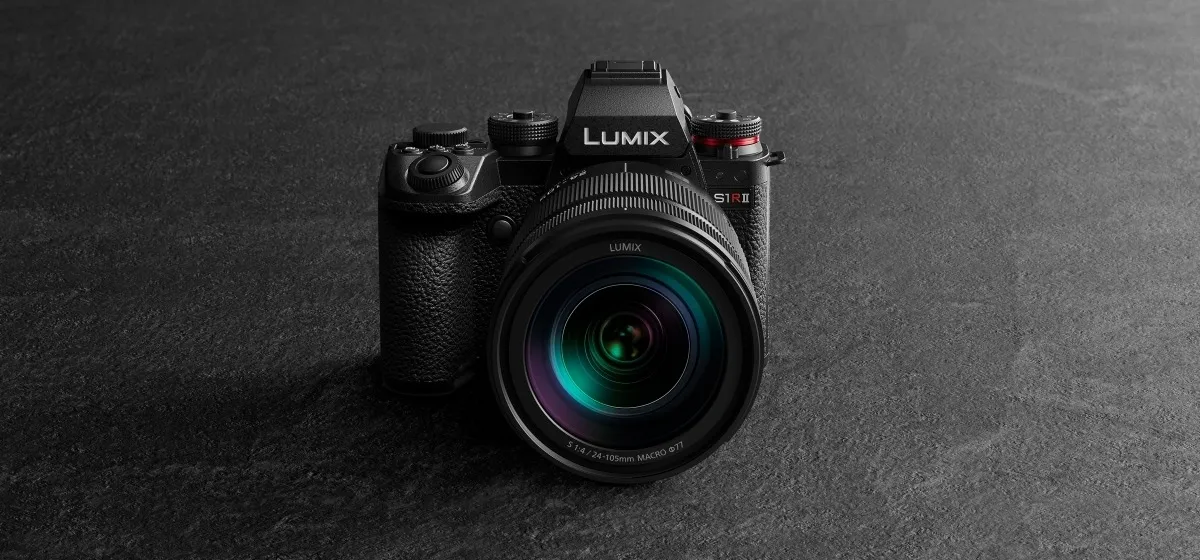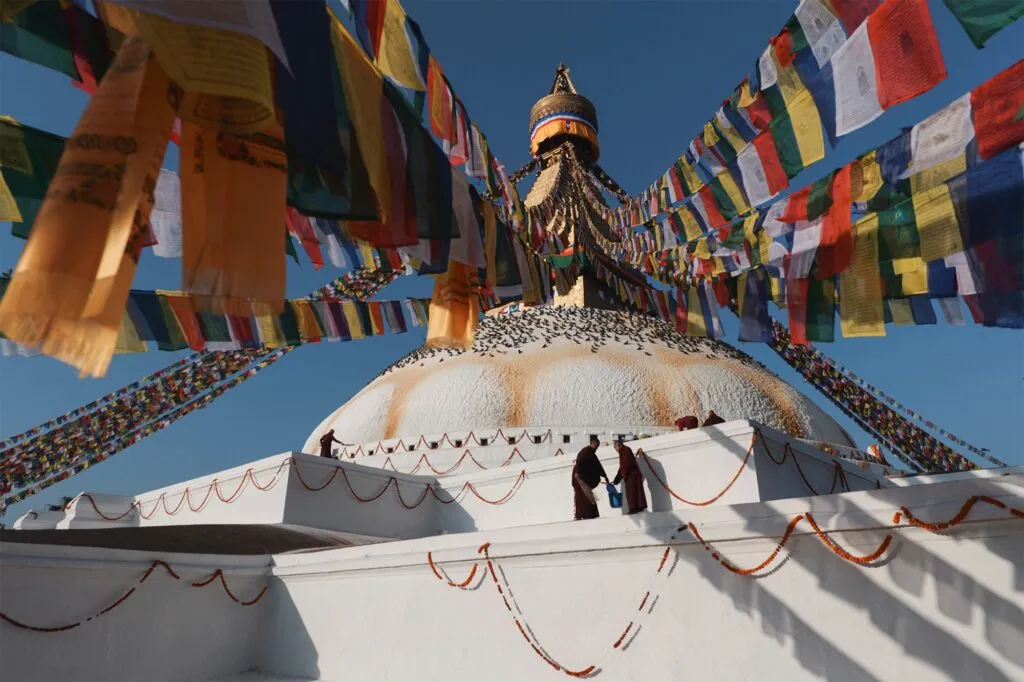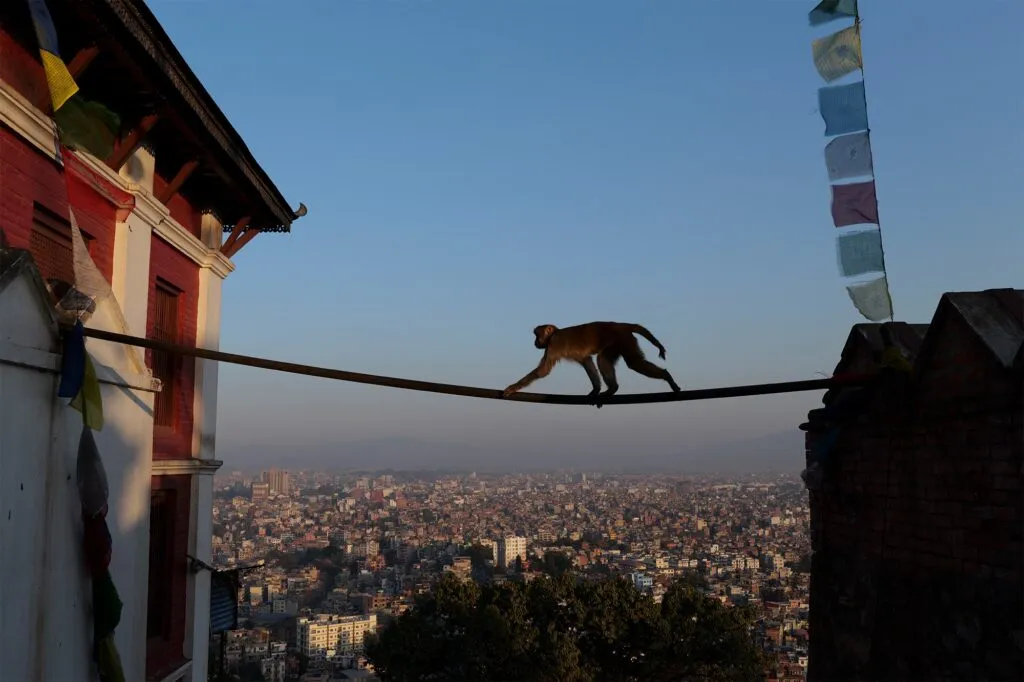
Hello everyone, Leo Liang here. In the world of photography, there are moments when something new arrives that stirs up a genuine wave of excitement among the community. It’s not always a megapixel increase or a feature but a tool that can potentially redefine how we approach things. For me, the announcement of the Panasonic Lumix S1RM2 is one of those moments. As someone who lives and breathes this stuff—from shooting in the field to sharing my knowledge on my blog and social media—I’ve been eagerly waiting to see what Panasonic would do to follow up on the venerable S1R. The original was a high-resolution powerhouse, but the market has evolved. We, as creators, have evolved. We expect better. We demand cameras that are not simply masters of still or video, but actual, seamless hybrids.
With all that we’ve learned, Panasonic took notice not just rhetorically; they went back to the drawing board and created a camera that feels bespoke for the professional creator of today. This is not an update; this feels like a reboot for the LUMIX S series. We’re talking about a brand-new sensor, 8K video capabilities, jaw-dropping high-resolution modes, and a workflow integration that could make my studio sessions and on-location shoots more efficient than ever. So, let’s grab a coffee and dive deep into what makes the S1RM2 so special. I’ll break down the specs, but more importantly, I’ll translate what they can do for us out here in the real world, trying to take that great picture. This is the type of gear that puts my photography enthusiasm into high gear, and I’m looking forward to sharing my two cents with you.

What’s the Engine Driving This New Creative Powerhouse
At the core of any great camera is its sensor and processor, and with the Panasonic Lumix S1RM2, it’s clear that’s where the revolution begins. Panasonic has introduced a newly developed 44.3-megapixel full-frame Back-Side Illuminated (BSI) CMOS sensor. Now, “BSI” isn’t just a marketing buzzword. For photographers, it means the sensor’s wiring is moved to the back, allowing more light to hit each photosite. The practical result? Better low-light performance, less noise at higher ISOs, and cleaner, more descriptive image data to contend with. Accompanying this is a new high-performance processor featuring L2 Technology. The new engine is the intelligence of the package, responsible for everything from processing speed to the camera’s award-winning color science. Panasonic calls it LUMIX Natural Color Science, and for folks like us who require gorgeous, life-like color out of camera, it’s a big thing. It will equate to fewer hours spent battling color correction in post and more hours on the creative aspects of our work.
But what gets my heart racing is how these building blocks enable game-changing capability. This combination of sensor and processor is why the S1RM2 not only has the capability to take high-pixel-still images, but it is able to do so at incredible speed and precision. In my landscape and building photography, the mere resolving power of 44.3MP is wonderful, allowing for gigantic print size and unbelievable cropping room. But beyond the realm of stills, this camera has much more to offer. The processing ability ensures that despite this high resolution, the camera remains responsive and quick to react, able to freeze fleeting moments. This combination of performance and resolution is what defines a contemporary professional camera, and Panasonic has apparently got the equation right. It’s not capturing a picture, it’s about capturing a picture with the highest amount of quality available, with the most vibrant colors and the sharpest, and with the speed to never miss the shot. It’s the promise upon which all the other awesomeness is founded.

Can It Really Capture 177 Megapixels Handheld?
Let’s talk about something that sounds like science fiction: a handheld high-resolution mode that can take around 177-megapixel images. I mean it. Pixel-shift high-res modes have been a wonder for years for studio and landscape shooters, but they’ve almost always had to be done on a tripod. Any kind of movement whatsoever would ruin the image. Panasonic has put that limitation out of commission. With the assistance of its remarkably effective in-body image stabilization (I.S.) system, the S1RM2 is able to take multiple shots, shifting the sensor by fractions of an inch for each shot, and then assemble them in-camera into one giant, detailed file. To accomplish this handheld is a paradigm shift. Imagine you’re on a cliff, with the wind blowing and not being able to level out your tripod, but still being able to snap a photo with so much resolution that you can zoom in to where you can tell the texture on single leaves or distant rock formations. It’s mind-boggling.
This 177MP High-Resolution Mode is a photographer’s paradise for my landscape photography. The ability to make such huge files places a universe of possibilities onto the table for large-format printing. Clients in the advertising and commercial markets who demand the best in image quality will be astonished. But it’s also about freedom to create. With a 177MP file, the range of possible crops is virtually unlimited. You could effectively get several, discrete, high-dpi compositions out of one shot. This is not a technical novelty; it’s a tool for changing the way we can frame a scene. Rather than “zooming with your feet,” you can shoot the wide shot and choose later in post-production what exactly you want to emphasize, without any significant loss of quality. As great photographer Ansel Adams once described, “You don’t take a photograph, you make it.” This ability gives us an incredible new canvas on which to “make” our perfect photographs, with a level of detail and control previously the exclusive preserve of medium format systems, but now in a versatile, handheld package.

Is 8K Video and In-Camera ProRes RAW a True Game-Changer?
As a hybrid creator who relies on both stills and video to tell stories, I’ve been waiting for a camera that makes zero compromises on the video front. The Panasonic Lumix S1RM2 steps up to the plate and hits a grand slam. This is the first LUMIX camera to support 8K 30p video recording, capturing footage with a stunning 14+ stops of dynamic range when using V-Log. That wide dynamic range is critical; it means maintaining monolithic amounts of detail in the highlights and in the shadows, giving me unimaginable latitude to color grade in post. But the show-stopper feature that completely upends my workflow is the ability to capture 5.8K Apple ProRes RAW HQ and ProRes RAW internally onto a CFexpress Type B card. It’s enormous. For years, recording in RAW video formats has involved carrying large and expensive external recorders connected to the camera via finicky cables. All of that power is now contained in the body of the camera.
Having recording power contained within the camera is a godsend for solo shooters and small production teams like mine. When I am out filming for my YouTube channel or working on a documentary assignment, having a lighter and simpler rig is a blessing in disguise. It makes me more mobile, less noticeable, and more efficient. No more worry about spares for an external monitor or a loose cable at the wrong time. The camera will be upgraded in the future with firmware allowing 8.1K and 7.2K Open Gate recording, which captures the whole field of the sensor. This is a director’s dream, with total flexibility to reframe shots for any aspect ratio—like a 16:9 widescreen movie and a 9:16 vertical social media short—from the same source material. By integrating pro-grade video codecs and recording functionality directly into the camera, Panasonic has created a product that not only delivers incredible video, but also makes the entire process from capture all the way through to post easier.

How Smart Is the New AI-Powered Autofocus?
Be honest, because despite all the praise Panasonic cameras have received about video capabilities and still image quality, autofocus has traditionally been that one area where they’ve had the most competition. With the S1RM2, it seems they’ve confronted that challenge head-on and offered a system that can hang with the best. The camera features a better Phase Hybrid Autofocus system that combines the best of phase-detection and contrast-detection systems in extremely fast, instantaneous focusing. But real magic happens with merging AI-powered subject recognition and tracking. This is not mere face and eye detection anymore. The system is able to track and track several subjects, both human and animal, and track them intelligently even when they turn back or are temporarily occluded.
In my work, which most often involves shooting dynamic shots—either a portrait session with an energetic model or an action event—this type of autofocus performance is not a nicety but a necessity. A good AF system equates to a higher keeper rate and the ability to concentrate on composition and creativity, knowing the camera is acing the focus. The S1RM2 supports this with some serious quickness, delivering burst shooting up to around 40 fps using the electronic shutter and continuous AF tracking. That is some remarkable speed for a high-res camera. So you never miss the action at its most intense, there’s even an “SH Pre-Burst” mode that starts recording frames before you’ve even fully pressed the shutter button. For sport, wildlife, or any unexpected action, this is a total game-changer. It’s as if having a tiny time machine, so whatever is the turning point, it will always be captured. A great photograph takes a split second, and here the technology gives us a better chance than ever to catch it.

Can This Camera End Forever the Age of the Blurry Photo and the Wobbly Video?
Panasonic’s image stabilization has been the gold standard of the industry for years, and the S1RM2 keeps up that reputation in an even bigger way. The camera boasts an incredible 8.0-stop 5-axis in-body image stabilizer (B.I.S.), which is easily utilized together with optically stabilized lenses using Dual I.S. 2 technology. What in the world does 8.0 stops of compensation mean in practical usage? It means handholding at ridiculously slow shutter speeds and still getting critically sharp photos. Imagine being able to shoot the silky motion of a waterfall without a tripod, or photographing in a dim auditorium without having to turn the ISO into noisy terrain. It is not a technical aspect; it is a gateway to artistic liberty. It changes the dynamics of photographer, camera, and light, allowing us to shoot in situations previously impossible without the use of support equipment. As the renowned photographer Ernst Haas once described, “The camera doesn’t make a bit of difference. All of them can record what you are seeing. But you have to SEE.” Such stabilization helps us in capturing what we are seeing, unshackled by technical limitations.
The benefits seep well into the video medium as well. The S1RM2 introduces a new Active I.S. mode that provides solid electronic stabilization for video, perfect for run-and-gun applications. The great thing is that it does so with hardly any crop, keeping your targeted field of view intact. It even provides distortion correction to keep wide-angle shots free from that wobbly, unnatural look that can plague lower electronic stabilization systems. For my vlogging and travel work, this is ginormous. It means that I am able to walk and talk into the camera and produce silky-smooth, gimbal-like footage without having to carry an actual gimbal. It’s another testament to how Panasonic is packing professional level production ability into a compact body, keeping me from having to work with as much equipment and providing more freedom and spontaneity when I am on the go.

How Does the S1RM2 Supercharge a Professional Workflow?
A good camera is more than its picture; it’s the function that it serves within a professional setting. That’s an area where I, as a working commercial photographer and business owner, am extremely discerning, and it’s an area where the S1RM2 truly delivers. The one most thrilling piece of news for my studio work is that the S1RM2 is the first LUMIX camera to natively support tethered shooting with Capture One. It has been a long-standing demand of professionals. This strategic partnership is that with the latest Capture One 16.5.7 release, I can connect the S1RM2 directly to my computer and see images display on screen in real-time. It is essential for studio portraits, product photography, and any shoot where clients or art directors come. It allows for immediate review of images, shared shot picking, and an improved, more professional workflow for everyone.
Les avantages du flux de travail ne s'arrêtent pas là. Panasonic construit une solide fondation logicielle autour de ses appareils photo. La nouvelle LUMIX Lab application vous permet de créer et d'envoyer vos propres LUT (Look-Up Tables) directement à votre appareil, vous permettant de visualiser et d'intégrer votre étalonnage couleur idéal sur le plateau. Idéal pour maintenir une cohérence visuelle tout au long d'un projet. Plus excitant encore, on parle de la nouvelle application LUMIX Flow , qui offrira un flux de production de bout en bout, du storyboard et de la liste de plans jusqu'à la gestion des fichiers. Et pour une expérience collaborative ultime en post-production, le S1RM2 intègre la plateforme Frame.io Camera-to-Cloud d'Adobe. Cela permet à l'appareil de télécharger automatiquement des photos et des fichiers vidéo proxy directement vers le cloud via une connexion Wi-Fi. Mon monteur pourrait être à l'autre bout du monde et commencer à couper une vidéo ou à sélectionner des photos quelques instants après que je les ai tournées. Cette chaîne d'intégrations prouve que Panasonic comprend les besoins des professionnels créatifs modernes, pour qui la vitesse, l'efficacité et la collaboration sont aussi importantes que la qualité d'image.

Mon verdict final : Un nouveau référentiel pour les créateurs hybrides
Après avoir pleinement exploré tout ce que le Panasonic Lumix S1RM2 S1RM2 a à offrir, une impression persiste : cet appareil ne fait aucun compromis. Panasonic a clairement écouté la communauté créative et a conçu un outil qui surpasse presque tous les autres sur tous les aspects. Pour le photographe commercial, de studio ou de paysage ayant besoin d'une haute résolution, le capteur 44,3 mégapixels et le mode haute résolution portable révolutionnaire de 177 mégapixels sont inégalés en termes de détails. Pour le réalisateur professionnel ou le créateur hybride, la transition vers la vidéo 8K et l'enregistrement interne Apple ProRes RAW redéfinissant le flux de travail constitue un pas de géant.
La mise à niveau majeure de l' autofocus hybride à phase piloté par IA, la meilleure stabilisation interne (IBIS) 8.0 stopsau monde, et l'interconnexion étendue avec des logiciels professionnels comme Capture One et Frame.io forment un ensemble parfaitement holistique. Ce n'est pas un appareil pour photographes ou vidéastes ; c'est un appareil pour créateurs . Il est fait pour moi et pour ceux qui naviguent entre les disciplines sans rencontrer de limites techniques. Le S1RM2 illustre l'engagement de Panasonic envers l'innovation et sa vision du processus créatif actuel. C'est un outil puissant, performant et intelligemment conçu qui, je crois, permettra aux photographes et cinéastes de repousser leurs limites créatives comme jamais auparavant.
Prêt à maîtriser votre équipement ?
Inspiré par ce qu'un appareil comme le S1RM2 peut accomplir ? La technologie ne fait pas tout, c'est la connaissance qui libère son plein potentiel. Pour améliorer vos techniques avancées de prise de vue, d'éclairage et de post-traitement, ou pour découvrir mes accessoires et filtres d'objectifs recommandés, rendez-vous sur mon site lensclear.net. Vous y trouverez des articles, des cours et des tutoriels conçus pour faire de vous un meilleur photographe. Faisons quelque chose de grand ensemble !